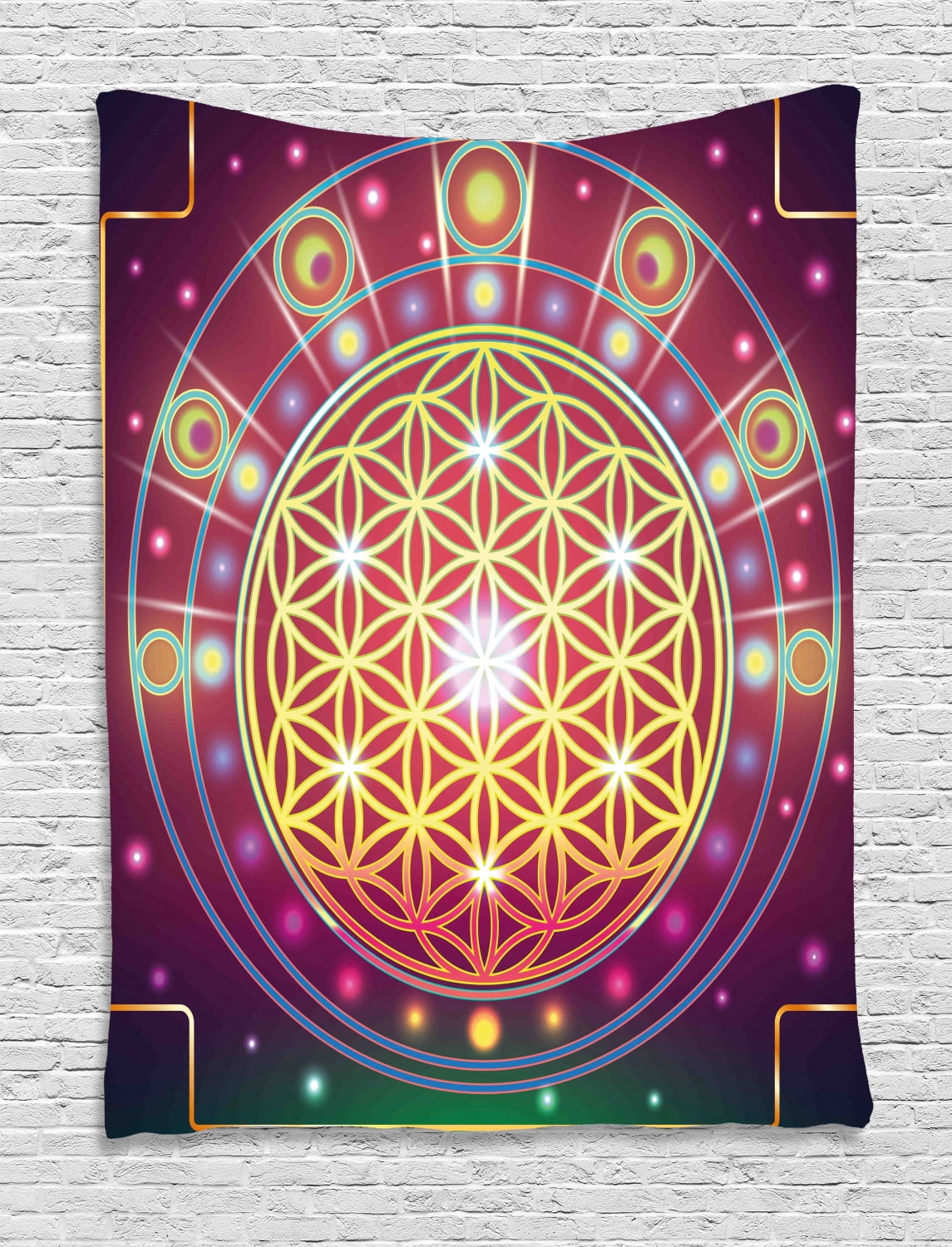

Eighth is the overcomer of all obstacles. The seventh is considered the appeaser of death. The third is the energy of activities that please all. The first triangle is the giver of all accomplishments. The next circle has the same sequence and direction, starting from the lowest triangle and moving counterclockwise. Starting at the lowermost outer triangle and moving in a counterclockwise circle, they are agitation, pursuit, attraction, delight, delusion, immobility, release, control, pleasure, intoxication, an accomplishment of desire, luxury, mantra, and the destruction of duality. These triangles also represent qualities and Shaktis. Those that point upward represent the masculine principle, downward represent the feminine. Within the inner lotus is the first set of interlocked triangles.

Each petal governs a specific activity: speech, grasping, motion, excretion, enjoyment, revulsion, attraction, and equanimity. The sixteenth petal represents the mind, which gathers and interprets information from the perceptions of the interactivity of the elements. Specifically, the petals represent the ten organs of perception and action (tongue, nose, mouth, skin, eyes, ears, feet, hands, arms, and the reproductive organs), and the five elements: earth, water, fire, air, and space. Within is the first ring of sixteen lotus petals representing complete fulfillment of all hopes and desires. Next are three circles representing the past, present, and future. The T-shape structures in the square are considered the gates of the four directions, and the entry points of the yantra.

The yogi meditates on the outer square to defeat these disturbing energies. The outside square represents mundane emotions, such as anger, fear, and worldly desires. In Vedic sacred geometry, the square corresponds to the earth. The outer square represents the earth element. Every line, triangle, and lotus petal symbolizes a specific type of shakti. Vedic traditions, specifically the Shri Vidya school of tantra, regard the design as the representation of the universe as well as the body of the goddess related to the feminine principle of shakti or energy. The Shri Yantra, called the “queen of yantras,” ( rajayantra ) is the symbol of the great divine mother principle, the source of all energy, power, and creativity. Once charged, the yantra is viewed as a sacred object. The plates are then ritually “charged” by priests - meaning that the physical objected is “tuned” to a specific vibration or energy. Used in ceremonies and rituals, yantra designs can be found on paper or bark, or created from flower petals, ash, and rice.įor mediation practices or “vastu,” the vedic version of feng shui, a yantra is embossed on a square copper plate electroplated with gold. There are hundreds of yantra designs related to deities, principles, and planets. ” A yantra is an instrument or tool, for meditation and contemplation and supports spiritual liberation. In Sanskrit, the word “yantra” comes from the root word “ yam ,” which means “ instrument ” or “ support ,” and “ t ra, ” derived from “ trana ,” meaning “ release from bondage. In 1987, Russian scientists used EEG technology to prove that the Shri Yantra geometry quickly brings viewers to a meditative state (Source: Biology Faculty of Moscow University, October 30, 1987). There is little question of the power of an accurately constructed Shri Yantra. The ancient Shri Yantra has become a trendy design, but most don’t realize the complexity, meaning, and symbology of the nine interlocking triangles and double ring of lotus petals. It’s everywhere - on t-shirts, jewelry, coffee cups, and wall decals.


 0 kommentar(er)
0 kommentar(er)
